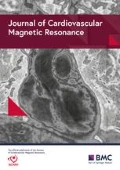Background
Predicting cardiac prognosis and outcome is important. As the heart progresses towards failure, it is known that the ventricular-vascular coupling (VVC) progresses from the optimal range (0.5 to 1.2) to values as high as 10 in severe failure. However, even hearts close to failure may exhibit a VVC in the normal range and thus its future predictive value is low. Here we consider the cardiac energy usage derived from cardiovascular magnetic resonance (CMR) to better utilize VVC data. To accomplish this we consider the difference between internal energy (EInternal) and external energy (EExternal) which we term energy debt (EDebt).
Objective
To establish the relationship between EDebt and VVC and show that EDebt adds to the assessment of cardiac health.
Methods
CMR volumetric image data were collected in patients (n = 90) undergoing functional evaluation to measure; end-systolic volume (ESV), end-diastolic volume (EDV), stroke volume (SV), blood pressure and heart rate. From the end-systolic pressure volume relationship (ESPVR) (Figure 1) the EInternal is calculated as:
EInternal = ½ ESV.Pes (equ 1)
Where Pes is considered to be approximated to the mean arterial pressure:
MAP = [DBP + 1/3 (SBP-DBP)] (equ 2)
The EExternal is calculated as:
EExternal = SV x Pes (equ 3)
VVC is calculated as:
VVC = ESV/SV (equ 4)
EDebt is calculated as:
EDebt = EInternal - EExternal (equ 5)
By substitution and arrangement:
EDebt = ½ Pes x SV x (VVC-2) (equ 6)

Figure 1
Conclusions
Here we consider the net difference between internal and external ventricular work derived from non-invasive PV loops acquired during routine CMR exams. By regarding internal work as a negative burden and external work as a positive expression of cardiac function, we show that hearts with a net energy debt cross over to failure, while hearts with a net positive energy expression function normally. Thus, EDebt provides additional information, since even when the VVC is within the optimal working range, the heart may be close to crossing the debt line, masquerading dysfunction. Once crossed, the curve indicates that rapid acceleration to a high VVC may imminently follow. Importantly, we show that even hearts with a healthy VVC value, heretofore believed to be advantageous, may be close to failure by the net energy debt criteria.
Author information
Authors and Affiliations
Rights and permissions
This article is published under an open access license. Please check the 'Copyright Information' section either on this page or in the PDF for details of this license and what re-use is permitted. If your intended use exceeds what is permitted by the license or if you are unable to locate the licence and re-use information, please contact the Rights and Permissions team.
About this article
Cite this article
Farah, V., Doyle, M., Rayarao, G. et al. Debt-free cardiac health. J Cardiovasc Magn Reson 18 (Suppl 1), P247 (2016). https://doi.org/10.1186/1532-429X-18-S1-P247
Published:
DOI: https://doi.org/10.1186/1532-429X-18-S1-P247


